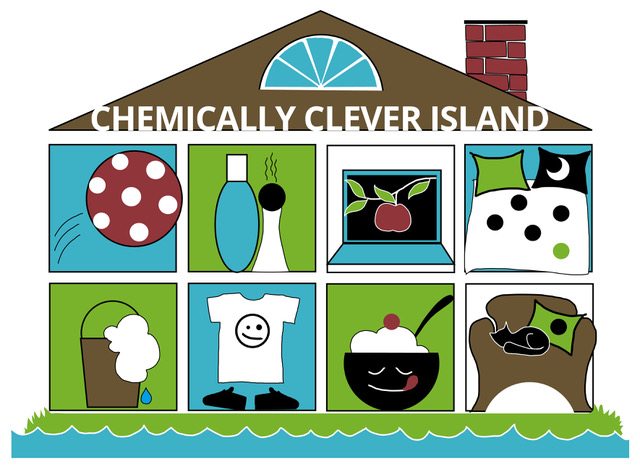Flame retardants - a toxic story

By using more flame retardants our lives are less flammable. Or? Fact is, there has never been as necessary to hurry out if an accident happens.
In the 1950s people could use 15 minutes to get out if there was a fire. Today there is, by average, 3 minutes before an apartment is completely on fire, despite that there is flame retardants in everything from building materials to furniture padding and electronics.
The problem is that the “new” materials, invented by us humans, such as different plastics, foam rubber and synthetic fabrics - are more easily set on fire than “old” materials such as wood, metal, glass and natural textiles. We solve this problem by treating the synthetic materials with even more chemicals.
And for sure, the flame retardants slow the forming of the flames a bit, at least in the case of a very small fire. But when the fire gets going these chemicals rather increase the smoke than decrease it.
And since it is the smoke, not the fire, which is the cause of 90 percent of the deaths in the case of fire, one can ask oneself how much benefit there is. The flame retardants in themselves also emit toxic dioxins when they burn. Those and all other toxic gases should not be inhaled, not even as a spectator, at the final extinction or afterwards.
Toxic
Many of the flame retardants are also harmful for the health and the environment. There are hundreds of different substances. The most efficient are the brominated flame retardants, which are also the most discussed: about 70 chemical compounds which contain the substance bromine. Most of the brominated flame retardants are accumulated in the fat tissue and stays for a long time in the body and nature.
Yet, we don´t know so much about how these substances affect humans, but animal testing implies that bromine is disruptive for the thyroid gland, enhances the risk for cancer and is endocrine disruptive. Fetus and new born babies are suspected to be extra sensitive. At home they are accumulated in the dust. Fat fish could also be a source and to a lesser extent also animal foods.
From cigarettes to the couch
The idea to protect furniture from flames is an idea which origins from the USA, initiated by the tobacco industry. When people died in fires due to falling asleep with their cigarette in their hand and the invention of the self extinguishing cigarette didn´t take off, they went for the furniture instead. The flame retardants became a hit in the beginning of the 1970s and spread as well to us. In the middle of the 1980s the marinating of the flame retardants was at its worst, and padded furniture and mattresses from this era are not particularly healthy.
In the 1990s the risks where brought to the attention, and in 2004 the pentaBDE was the first brominated flame retardant to be forbidden within the EU. Many similar substances are still in use, though. The brominated flame retardants could travel a long way through the air. They are widely spread in nature, and are not just found in the breast milk but also in fish and polar bears.
Still there
Brominated flame retardants are not manufactured in Sweden and Finland, and some of the “worst” are now forbidden within EU. The measured levels for nordic citizens are well within the safe margins compared to the levels used for the animal testing. Still there are many substances left in products out on the market, such as electronics, electric cables, furniture paddings, textiles and carpets.
As a consumer it is also difficult to know if there are forbidden flame retardants in imported goods.
The following classic methods are left…
- ask in the store
- choose natural materials as often as possible
- buy environmentally labeled products which are more strictly controlled and - since most of us do possess materials and electronics with an unknown content
- air and clean for maximum clean air.
